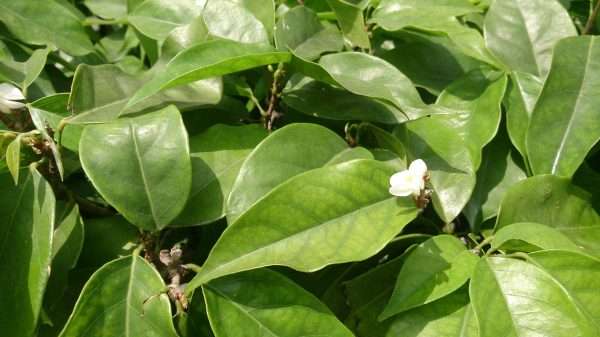
Camwood, scientifically known as Baphia nitida Lodd, is a shrubby, erect, small, hard-wooded forest tree, belonging to Fabaceae/Leguminosae (Pea family). It is more common within the coastal region of central West Africa and Asia, where it is used for managing a wide range of disorders.
Also known as barwood, Dolo, Doro, shiny camwood and African sandalwood (although not a true sandalwood), camwood is commonly called majigi in Hausa, uhie in Igbo, osun in Yoruba and pp in Cross Rivers State. It is normally grown as an ornamental shade tree or hedge.
Constituents
Camwood contains carbohydrate, crude protein, crude lipid, crude fibre, ash and moisture. Phytochemical screening in some studies have revealed the presence of alkaloids, flavonoids, saponins, tannins, phlobatannins, terpenes, terpenoids, cardiac glycosides, hydrogen cyanides and steroids.
Preparations
Camwood may be available as pellets or powder. The powder or leaves may be used as ointment, infusion or decoction.
Pharmacological actions and medicinal uses
When mixed with the appropriate solvent or with other appropriate herbs, camwood can be used to cure enteritis and other gastrointestinal problems, like diarrhoea. When an infusion is made, it can be used to treat venereal diseases (with palm wine), asthma (with Senna occidentalis or finely ground root bark are mixed with honey), female sterility and painful menstruation (with the leaves of Morinda lucida), epilepsy, cardiac pain, jaundice and diabetes (decoction of the leaves), constipation (as an enema), parasitic skin diseases (leaves or leaf juice used externally), bone fractures (with Veld Grape) headache (extract of young leaves with some salt and red pepper used as nose drops), sprains, swollen joints, and rheumatic pains (with shea butter).
A study revealed that B. nitida is a suitable counter stain for haematoxylin stains especially on liver and kidney tissues and may be a potential alternative to eosin in the demonstration of tissue pathology.
Camwood powder has exfoliative, anti-aging, wrinkle-smoothing, rejuvenating, astringent and emollient effect on the skin. It can be used to achieve these effects when mixed with a suitable solvent like honey, coconut oil, almond oil, rosewater, glycerin or even warm water. When mixed with turmeric and coconut oil, camwood powder will clear dark spots and give the skin a healthy glow. Application of any of these as masks should be followed by a light rinse off with black soap. Camwood has the natural ability to treat sunburn, restore skin elasticity, even out skin tone, and refine skin texture among others. Camwood powder is very beneficial in the management of pimples, acne and eczema.
Camwood powder contains powerful antioxidants and is also an anti-inflammatory agent that helps to improve blood circulation to the face, remove toxins and fight the formation of wrinkle-causing free radicals.
The dye from camwood has the ability to prevent bee-stings when rubbed on the body. It can be used to treat insect bites, swelling, sores and wounds. Camwood, when mixed with almond oil and coconut oil, helps to tighten the skin.
Camwood powder consist of powerful antioxidants and is also an anti-inflammatory agent that helps to improve blood circulation to your face, remove toxins and fight the formation of wrinkle-causing free radicals.
Adverse effects
There are no known cases of an adverse reaction to camwood powder.
Economic uses and potentials
100g pure camwood powder costs between N1,500- N3,000. Camwood has potentials in the pharmaceutical, cosmetic, textile and carpentry industries.
References
Healthbenefits (2021). Health benefits of Camwood. Healthbenefits.com. Available at: https://www.healthbenefitstimes.com/camwood/. Accessed 28/6/23.
By Pharm. Ngozika Okoye MSc, MPH, FPCPharm
(Nigeria Natural Medicine Development Agency)
Email: ngozikaokoye@yahoo.co










